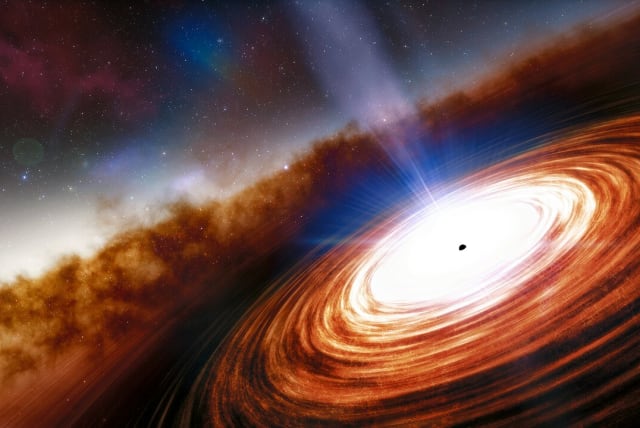Astronomers observe early galaxy growth with new NASA telescope

Before using NASA's JWST telescope, studying galaxy growth at such an early stage in the universe was impossible.
Astronomers using NASA’s James Webb Space Telescope (JWST) have observed a galaxy growing from the inside out, according to their research published in Nature Astronomy.
This newfound galaxy has a dense core packed with stars, while stars in the outer regions are less thick. Interestingly, new stars are forming rapidly in these outer areas, indicating the galaxy is expanding outward.
Previously, studying galaxy growth at such an early stage in the universe was impossible. However, scientists from Cambridge University, utilizing JWST, captured the earliest evidence of this new galaxy growth.
"The question of how galaxies evolve over time is crucial in astrophysics," explained Dr. Sandro Tacchella from Cambridge. "We've had data on nearby galaxies, but Webb gives us a view into galaxies billions of years ago, opening up new questions about how the universe formed."
How galaxies form
Dr. Tacchella added, "Galaxies start small as gas clouds collapse under their own gravity, forming dense cores of stars. As they gather more gas, they spin faster and grow, much like a skater pulling in their arms to spin faster. This movement often shapes galaxies into spirals or discs."
The observed galaxy, part of the JWST Advanced Extragalactic Survey (JADES), is actively forming stars. Its core is already as dense as that of older, massive galaxies. Star formation typically happens further from the core, where a 'clump' of star formation is even more distant.
Using JWST, scientists confirmed predictions that star formation spreads to a galaxy’s outer regions as it grows. "With Webb, we’re now able to observe what we previously only modeled," said PhD student William Baker, co-author of the study. "It’s like checking our homework with real data."
Utilizing JWST’s advanced instruments, the team studied the galaxy's light emitted to estimate the number of young and old stars, translating this into the galaxy’s size and star formation rate.
The rapid star formation in the outer regions means the galaxy doubles its size in these areas every 10 million years—a stark contrast to the Milky Way, which takes 10 billion years to do the same.
The galaxy’s dense core and high star formation rate suggest it contains ample gas for star creation, possibly reflecting different conditions in the early universe.
"Of course, this is just one galaxy," Dr. Tacchella noted. "We’re now looking at other galaxies from the same era to see if this inside-out growth pattern was common. By studying galaxies across time, we may learn how they evolved into the structures we see today."
Jerusalem Post Store
`; document.getElementById("linkPremium").innerHTML = cont; var divWithLink = document.getElementById("premium-link"); if (divWithLink !== null && divWithLink !== 'undefined') { divWithLink.style.border = "solid 1px #cb0f3e"; divWithLink.style.textAlign = "center"; divWithLink.style.marginBottom = "15px"; divWithLink.style.marginTop = "15px"; divWithLink.style.width = "100%"; divWithLink.style.backgroundColor = "#122952"; divWithLink.style.color = "#ffffff"; divWithLink.style.lineHeight = "1.5"; } } (function (v, i) { });

